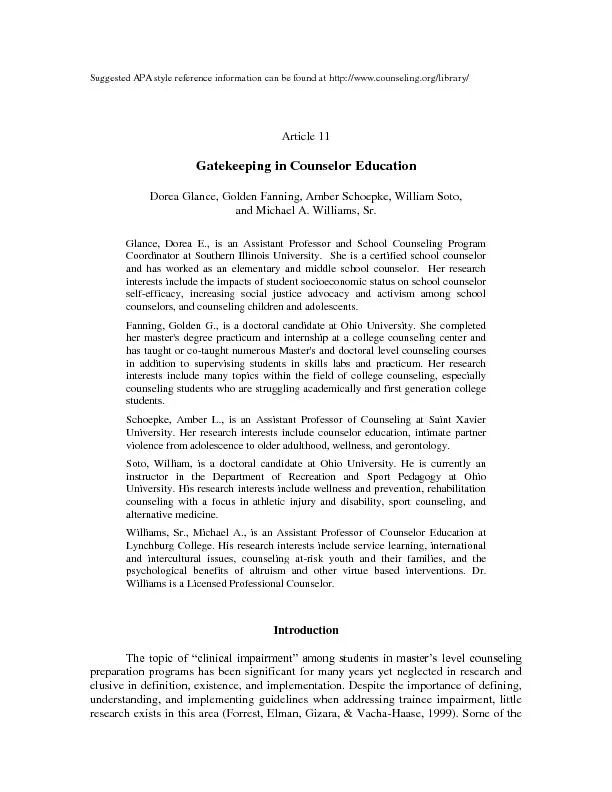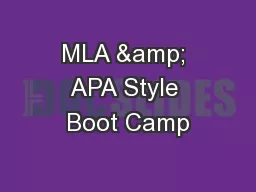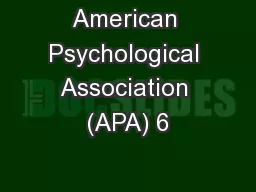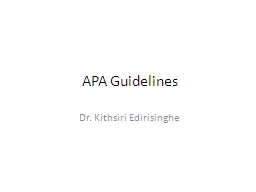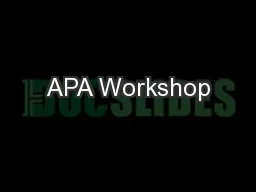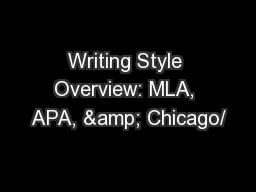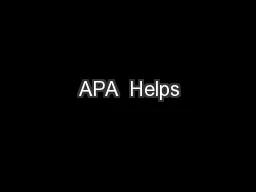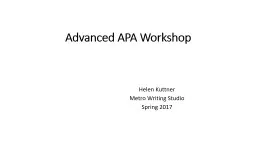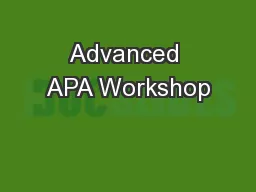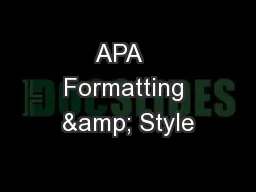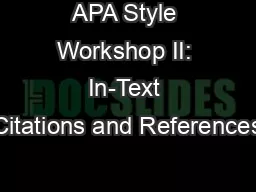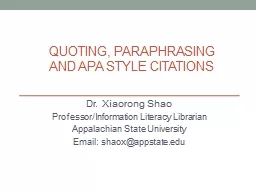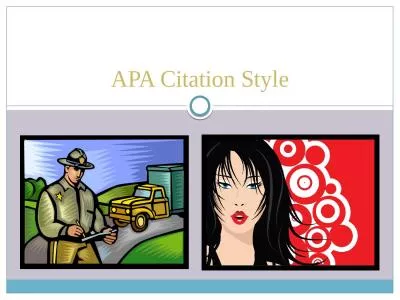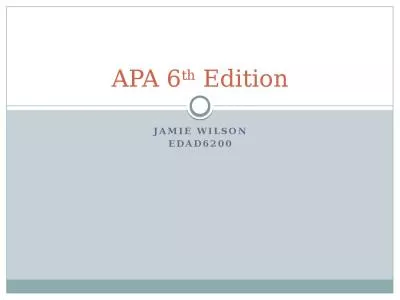PDF-Suggested APA style reference information can be found at
Author : lois-ondreau | Published Date : 2016-06-08
httpwwwcounselingorglibrary Article 11 Gatekeeping in Counselor Education Dorea Glance Golden Fanning Amber Schoepke William Soto and Michael A Williams Sr Glance
Presentation Embed Code
Download Presentation
Download Presentation The PPT/PDF document "Suggested APA style reference informatio..." is the property of its rightful owner. Permission is granted to download and print the materials on this website for personal, non-commercial use only, and to display it on your personal computer provided you do not modify the materials and that you retain all copyright notices contained in the materials. By downloading content from our website, you accept the terms of this agreement.
Suggested APA style reference information can be found at: Transcript
Download Rules Of Document
"Suggested APA style reference information can be found at"The content belongs to its owner. You may download and print it for personal use, without modification, and keep all copyright notices. By downloading, you agree to these terms.
Related Documents

